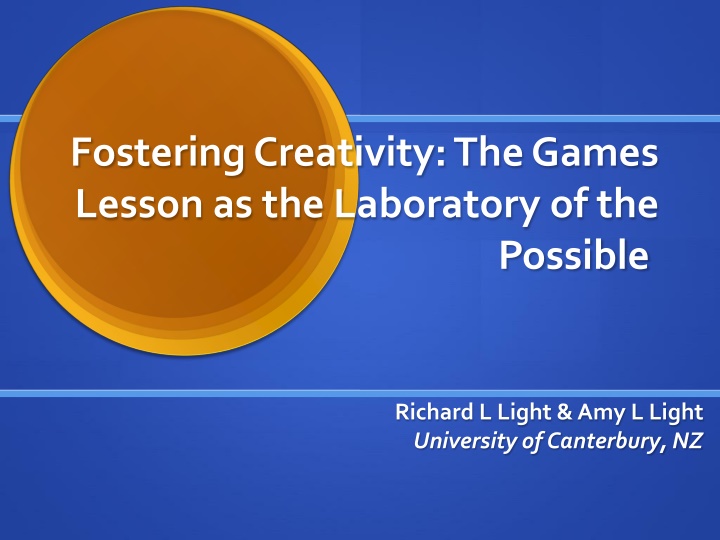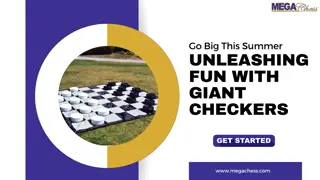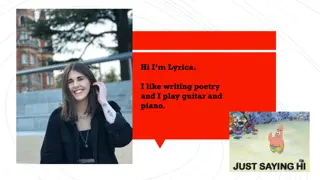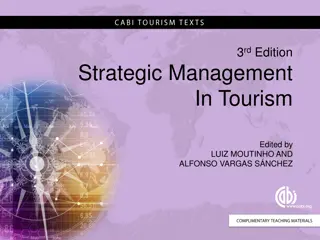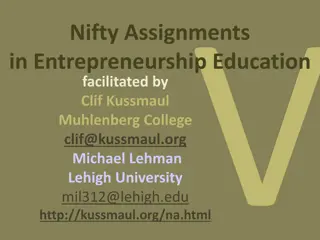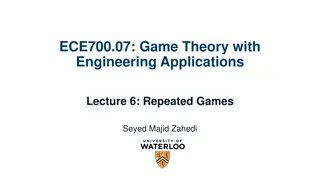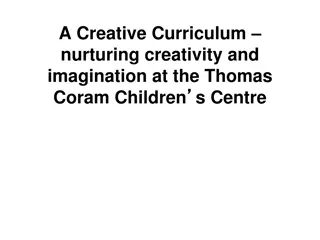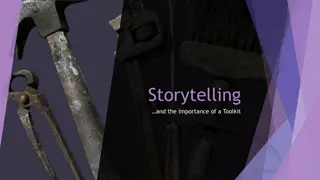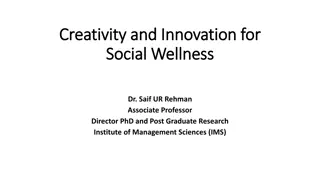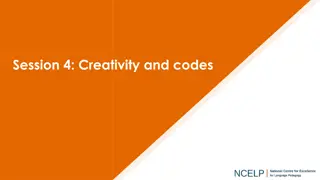Unleashing Creativity Through Play: Lessons from the Games Laboratory
Exploring the relationship between schooling, physical education, and creativity, this article delves into the impact of structured learning on fostering innovative thinking. From standardized art assignments to the play element in games, it reflects on the balance between following instructions and nurturing individual expression, emphasizing the importance of promoting divergent thinking and problem-solving skills. Through stories and insights, it advocates for embracing creativity as a vital aspect of education.
Download Presentation

Please find below an Image/Link to download the presentation.
The content on the website is provided AS IS for your information and personal use only. It may not be sold, licensed, or shared on other websites without obtaining consent from the author.If you encounter any issues during the download, it is possible that the publisher has removed the file from their server.
You are allowed to download the files provided on this website for personal or commercial use, subject to the condition that they are used lawfully. All files are the property of their respective owners.
The content on the website is provided AS IS for your information and personal use only. It may not be sold, licensed, or shared on other websites without obtaining consent from the author.
E N D
Presentation Transcript
Fostering Creativity: The Games Lesson as the Laboratory of the Possible Richard L Light & Amy L Light University of Canterbury, NZ
Introduction I loved drawing and painting and was trying to hide how excited I was about my first art class of the year. I couldn t wait to be let loose on a clean sheet of paper with all those bright paints. The teacher gave all of us a piece of paper with a standardized fish outline printed on it and detailed instructions on what colours to use and where. My heart sunk; and inside my head I was shouting why? but I complied with the teacher s instructions, as I always did.
My creation was identical to all 30 of my classmates- except for one. Stephanie had coloured the eye of her fish brown - not blue, as we has been instructed to do. I sat in silence as she was reprimanded for not following instructions and ruining the picture as the teacher accused her of doing. At that moment I had a new understanding of art and what it meant to draw or paint. I understood that I should listen carefully to the teacher s instructions and follow them precisely, because they know more about art than students do. With glances at other students work to make sure mine was correct , I showed the teacher my work to seek approval and reward.
Schooling and creativity Don t ask why - just how (Beghetto & Plucker, 2006) Schooling kills creativity (Robinson, 2006) No significant inventions breakthroughs in arts/sciences past 40 years (De Bono, 1993). Decline in all children s creativity from 1990 (Kim, 2011) Banking Vs problem posing (Friere, 1970)
Physical education & creativity Historical connections with military drill, conformity and control (Kirk, 2011) Sport skills: Break down into component parts, drilling and repetition - convergent thinking, control, conformity (banking) Game Sense: Divergent thinking, problem solving, interaction, creativity, possibilities (problem posing)
The play element in games Games in early childhood engaging & creative Play takes us into a world of possibilities for creative thinking and action Play is the laboratory of the possible. To play fully and imaginatively is to step sideways into another reality, between the cracks of ordinary life (Henricks, 2006, p. 1).
When deeply engaged in a good game we can be transported to a place where customary logic no longer applies and where we are surprised at every turn. In such ways, the play world is a kind of puzzlement. Like Alice (in Wonderland) we are drawn in deeper and deeper, at each moment learning something curious about the universe and about ourselves (Henricks, 2006, p. 2).
Bringing back play to games Play important in child s development Receives little attention in GBA literature Spontaneity, fun, meaning and play element decline over journey through schooling Teachers obliged to teach how to play Teaching removes the play element GS restores play element: invention, collaboration interaction, freedom to explore
Developing Creativity Through Game Sense . Indirect teaching & learning in games Open questioning instead of instruction Collaborative inquiry Supporting risk taking & mistakes as learning
Locating learning in games Learning through engagement with learning environment (Dewey, 1916/97) Brings back play element Opportunities for innovation and creativity Fosters joy and positive affective experiences that promote interaction & creativity Constant adaptation and opportunity to be creative
Questioning Modified games as problems to be solved Open ended questioning used to promote dialogue, thinking and collaboration Good questioning opens up possibilities for creative thought and action Teacher and class open to possibilities Students involvement in creating and modifying games
Collaborative inquiry Collaborative problem solving that draws on resources of the team/group Identifying problem, formulating solution, testing and evaluating inquiry-based learning Opportunities for, and encourages, creativity Promotes excitement about learning and having freedom to think and act creatively
Supporting risk taking Creativity involves taking risks Need supportive environment that encourages taking risks Positive attitude toward mistakes as opportunities for learning Importance of reflection (individual and collective)
Conclusion Playing games fosters creativity Key issue is level of complexity Excitement of discovery and empowerment can make learning liberating & transformative Cannot teach creativity-develop environments that can foster its emergence Teacher needs open & inquiring disposition Let creativity emerge over time in ways that may not be immediately noticed or easily measured.
